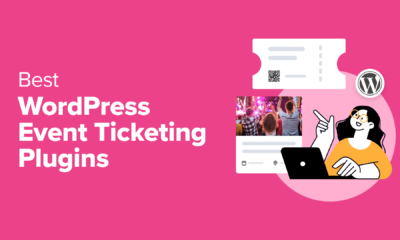I recently moved away from a city where I had lived for over 20 years. I think I felt it would be no different than when I went off to college, easily adapting to my new life and easily making new friends. However, moving when you’re 20 and moving when you’re 50 are radically different things and I have been looking for creative ways to connect with the close friends and colleagues I left behind.
Get the daily newsletter digital marketers rely on.
Zoom fatigue is real
Because of the past several years, I have been wary of Zoom calls with friends, and I searched for a new, fresh way to connect. Enter XR – extended reality – where avatar-based platforms can help make you feel more connected and provide a much richer experience. Why not try some of the platforms I’ve been writing about over the years to help me maintain my closest friendships and professional connections?
With that goal in mind, along with offering up XR newbies an excuse to join in the fun and learn about the newest immersive platforms, I created the XR Marketing Pub Crawl. An immersive, virtual technology hang-out session that makes various stops in business-focused immersive and virtual spaces. Along the way, we chat about what we’re experiencing and share our thoughts on this emerging field of interactive marketing.
In my first-ever XR pub crawl, I invited my dear friend and mentor, Billie Goldman, to join me. We not only had a BLAST exploring, but we also discussed how businesses were (or weren’t!) currently leveraging immersive technology for events and marketing. A 25-year Intel veteran, Billie shared her perspective on why the enterprise has been slower to adopt these immersive virtual spaces. Highlights and the full-length version of our time together are available on Twitch.tv/lisapeyton. If you’re eager to learn more about XR for marketing, check out my latest post on the topic, Become a Metaverse Marketing Maven.
The top ten considerations for XR and events
- Accessibility: For business, the quality of the 3D content within the immersive space isn’t as important as accessibility and ease of use. The learning curve for professionals accessing immersive platforms is still a blocker to mass adoption. You DON’T need a headset for immersive experiences and events. 3D spaces that offer interaction and ‘choose your own adventure ‘capabilities can be accessed today via laptops, smartphones or tablets.
- Relevance: There must be a compelling reason for the user to enter the immersive space. The pay-off must be worth the lift! These new immersive spaces need to create compelling ways to get new users to the table, including a free and open immersive campus with relevant events. The smartest platforms are holding their own events within the platform with exciting speakers and exclusive content for their target profiles.
- Value: Done right, immersive can extend the life of an in-person event. Leveraging the big budgets that go into event planning and content towards a rolling thunder approach that includes evergreen digital touchpoints. Businesses need to continue to move toward an always-on, evergreen, relationship-building approach to their audiences and communities. Siloed event activations and campaigns ignore the new normal of 24/7 access to information, communications, and the new user journey of prospects.
- Scale: Size of your event matters – immersive can scale. However, capabilities such as spatial audio and room mirroring will be needed to accommodate large-scale events.
- Security: Many immersive platforms based upon Web-based 3D can live behind enterprise firewalls and support security protocols. This is a key question to ask when vetting any platform if security is a concern.
- Usability: Immersive spaces need to allow for quick access to information. Platforms that require avatars to walk around 3D spaces can create friction and, therefore, be a barrier to professional adoption. Easy teleporting, running and flying need to be intuitive and help users rapidly find what they need. Enterprise still struggles with avatars, preferring a hyper-realistic approach instead of a more creative or expressive avatar.
- Engagement: These spaces will never feel as comfortable as a real-world conversation, but immersive spaces can offer something better than Zoom or other standard video conferencing. Immersive spaces can be a great way to enhance (not replace) a more traditional 2D event platform, allowing for more interactive networking, collaboration and connection. Immersive spaces are perfect for gamification and can increase attendee engagement by creating easter eggs, scavenger hunts, leaderboards, contests and giveaways. Enterprise virtual events, even post-covid, aren’t doing a good job engaging online users. Virtual event engagement is still a very big issue.
- Personalization: Immersive spaces lend themselves to the effective use of AI and chatbots, easily creating avatars that complete simple tasks like answering user questions and providing a more directed and intuitive experience. This enables the event organizer to provide a more personal experience and address simple user questions 24/7 without around-the-clock live support.
- Customization: Immersive platforms have a robust array of customization options for self-representation, including fully customizable avatars, video display or both. It’s not ‘either or’ when choosing between an avatar or a live webcam shot of the user. You can creatively leverage both, as immersive spaces can combine the sense of presence and embodiment of having an avatar sitting within a virtual space and at the same time livestream in the webcam of the user on a screen within the space.
- Deployment: The needs of SMB and enterprise events and event attendees are different and require a customized approach to attendee engagement. Immersive event technology and spaces offer many different capabilities, environments and experiences depending upon the method of consumption. The best immersive platforms allow the event organizer to determine how much interaction and customization is offered to attendees. Understanding the profile of your event attendee should drive the immersive strategy, ensuring that it’s set up to support their comfortability with the technology. Suppose you’re looking for white-glove service for your immersive event. In that case, it’s essential to hire a third-party event consultant or agency who can interface with the 3D platform, understands the challenges of the enterprise and understands immersive tech.
Join us in the Metaverse on Cinco de Mayo
Are you interested in joining the XR Marketing Pub Crawl? On May 5th at 5 p.m. PT, we’ll be exploring the hottest trends and newest technologies and visiting accessible 3D spaces through the lens of marketing and communications. Learn more and register for this interactive webinar. We’d LOVE to see you.
Opinions expressed in this article are those of the guest author and not necessarily MarTech. Staff authors are listed here.









![Double Down & Double Up [Hot Takes + Event Highlights] Double Down & Double Up [Hot Takes + Event Highlights]](https://articles.entireweb.com/wp-content/uploads/2023/11/Double-Down-Double-Up-Hot-Takes-Event-Highlights-400x240.jpg)
![Double Down & Double Up [Hot Takes + Event Highlights] Double Down & Double Up [Hot Takes + Event Highlights]](https://articles.entireweb.com/wp-content/uploads/2023/11/Double-Down-Double-Up-Hot-Takes-Event-Highlights-80x80.jpg)








You must be logged in to post a comment Login